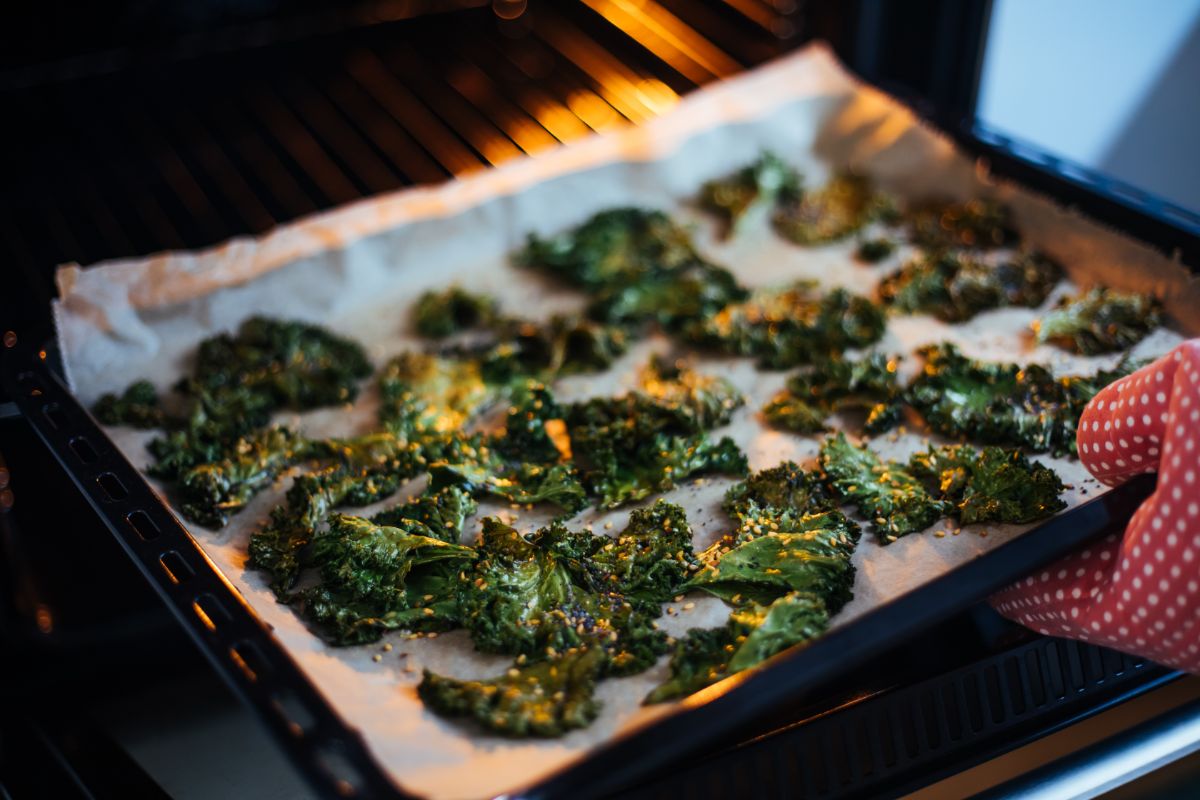To dehydrate vegetables in an oven, slice them into thin pieces. Blanch the veggies for 3-5 minutes, and pat them dry. Lay the slices in a single layer on a parchment paper-lined baking sheet, and dehydrate them in the oven on the lowest temperature setting for 4-6 hours.
Table of Contents
Step-by-Step Guide for Dehydrating Vegetables in an Oven
- Rinse the vegetables in cool running water to remove any dirt or debris.
- Cut off any inedible ends, stems, or seeds, and then chop your veggies into thin, even pieces. The thinner the slices, the faster the drying process.
- Blanch the vegetable slices by dunking them in boiling water for 2-3 minutes, then submerging them in an ice bath. Once cooled, drain off the water and set the vegetables aside.
- Line a baking sheet with parchment paper. Lay the vegetable slices in a single layer, ensuring they don’t overlap for even drying.
- Preheat the oven to the lowest temperature, between 140°F – 150°F.
- Place the veggies in the oven, and prop the oven door open using a wooden spoon. This allows for better airflow and to allow humidity to escape.
- Let the veggies dehydrate and check on them every 30 minutes. It should take 4 to 8 hours dehydrating time, depending on the vegetable and how thick the slices are.
- Once the vegetables are completely dry, remove them from the oven and allow them to come to room temperature. Test them to ensure they are brittle and have no moisture when squeezed.
- Place dehydrated vegetables in labeled, airtight containers for long-term storage and to reduce the chance of spoilage.

What Temperature Do You Dehydrate Veggies in an Oven?
Since most ovens don’t have a setting for dehydrating, it is best to set your oven temperature to the lowest setting. Ideally, this will be around 140°F, though many ovens do not have a setting below 170°F.
It is still possible to create dehydrated food at higher temperatures, but it is important to watch it carefully to ensure the food doesn’t burn.
Do All Vegetables Need to Be Blanched?
Not all vegetables need to be blanched. As a general rule, if you would cook it before eating it, you should blanch it. Vegetables that should be blanched include sweet potatoes, zucchini, and green beans.
Blanching stops the enzyme action of vegetables and will prevent discoloration and flavor loss that would otherwise occur during the drying process.

How Long Does it Take to Dehydrate Vegetables in the Oven?
The length of time it takes to dehydrate vegetables in the oven depends on which veggies you are using and the thickness of the pieces.
Most vegetables take 4 to 8 hours to dehydrate. However, oven drying is a less precise method of food preservation than using a food dehydrator, so be sure to check on your vegetables regularly.
Here are some common dehydrating times for oven-dried veggies:
| Type of Vegetable | Dehydrating Time |
| Asparagus | 5-6 hours |
| Beets | 6-8 hours |
| Green Beans | 6-8 hours |
| Mushrooms | 2-5 hours |
| Onions | 4-8 hours |
| Peppers | 4-8 hours |
| Potatoes | 6-10 hours |
Can You Dehydrate Vegetables in a Regular Oven?
It is possible to dehydrate vegetables in a regular oven, but convection ovens are the best type of oven for dehydrating food.
Convection ovens promote better airflow due to the fan and heating element located at the back of the oven, are more energy efficient, and often have a low-temperature setting.

What are the Benefits of Dehydrating Vegetables in an Oven?
- Faster than dehydrators. Higher temperatures mean reduced drying time.
- Higher capacity. Ovens have a larger drying cavity so you can dry more at once.
- Less expensive. No need to spend money on a food dehydrator.
- Saves space. Doesn’t take up any space on the counter.
How to Store Oven-Dried Vegetables
The best way to store dried vegetables is to place them in an airtight container in a cool, dark, dry room. Moisture and heat accelerate the spoiling process, so keeping your dehydrated goods away from those two things are key.
You can also utilize vacuum-sealing bags and place vegetables in the freezer to further increase their shelf life.

